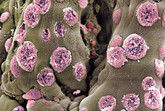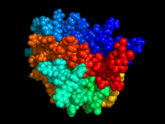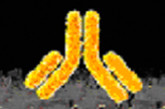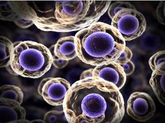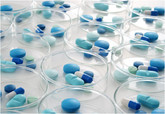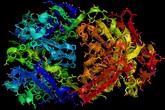Biosimilars
Infliximab biosimilar comparable to Remicade
South Korean biotechnology company Celltrion presented results of its extended trials for its biosimilar infliximab candidate Remsima (CT-P13) at the European League Against Rheumatism (EULAR) 2013 Conference, which was held in Madrid, Spain on 12–15 June 2013.
Erythropoietin biosimilars in bone marrow transplantation and stem cell donation
Combination therapy with granulocyte colony-stimulating factor (G-CSF) and erythropoietin (EPO) has been used with the aim of accelerating the recovery of red blood cells following autologous bone marrow transplantation [1]. Previous studies have shown, however, that this practice has no significant effect on erythroid recovery and transfusional requirements.
Robust data for biosimilar trastuzumab programmes presented
Celltrion and Pfizer have presented robust data from their respective biosimilar trastuzumab programmes at the ASCO (American Society of Clinical Oncology) 2013 Annual Meeting held on 31 May to 4 June 2013.
Pfizer to start trial for biosimilar adalimumab
Pharma giant Pfizer is once again expanding its pipeline of biosimilars and is set to start a phase I study for its biosimilar adalimumab candidate (PF-06410293) according to ClinicalTrials.gov, the US clinical trials website.
Sandoz comments on EMA’s new draft biosimilars guidance
Sandoz, the generic drug division of Swiss drug giant Novartis, is pleased that the European Medicines Agency (EMA) has issued a draft revised guideline on non-clinical and clinical issues in biosimilar product development.
Call for clarity in FDA’s draft guidance on biosimilar meetings
Drug companies have made comments on FDA’s draft guidance for industry on formal meetings between the agency and biosimilars manufacturers. They believe that the guidance needs some revision to protect data and provide clarity.
Use of G-CSF biosimilars for reduction of fever
The American Society of Hematology, the British Society of Haematology, the European Society of Hematology and the European Group of Bone Marrow Transplantation all recommend the use of granulocyte colony-stimulating factor (G-CSF) after transplant in order to reduce the time to neutrophil recovery and the number of days with fever.
Trials to start for biosimilar infliximab and etanercept
Pfizer is to start a phase I study for its biosimilar infliximab candidate (PF-06438179) and Samsung Bioepis has initiated a phase III clinical trial for its biosimilar etanercept (SB4), according to entries on the US and EU clinical trials websites.
Positive post-marketing data for biosimilar epoetin
Injectable generics specialist, Hospira, presented results from a post-marketing study of the company’s European biosimilar epoetin (Retacrit) on 3 June 2013 at the 48th Annual Meeting of the American Society of Clinical Oncology (ASCO) held in Chicago, USA.
Celltrion applies for Korean approval of biosimilar trastuzumab
On 4 June 2013, South Korean biotechnology company Celltrion announced that it had filed for approval of its biosimilar candidate CT-P6 with the Korean Ministry of Food and Drug Safety (MFDS, formerly the Korea Food and Drug Administration).
